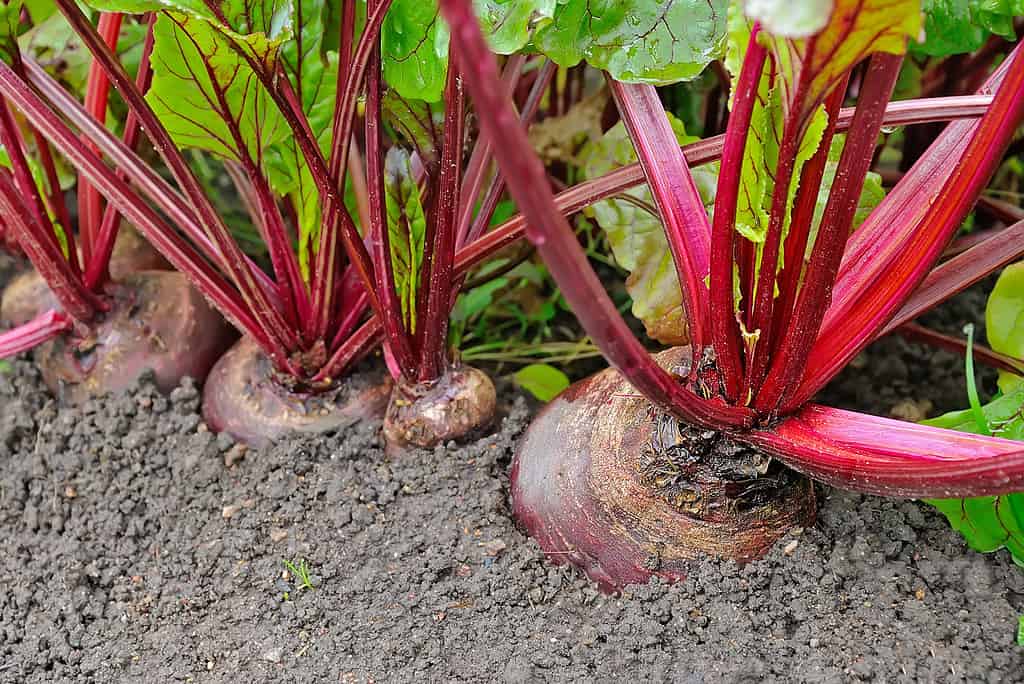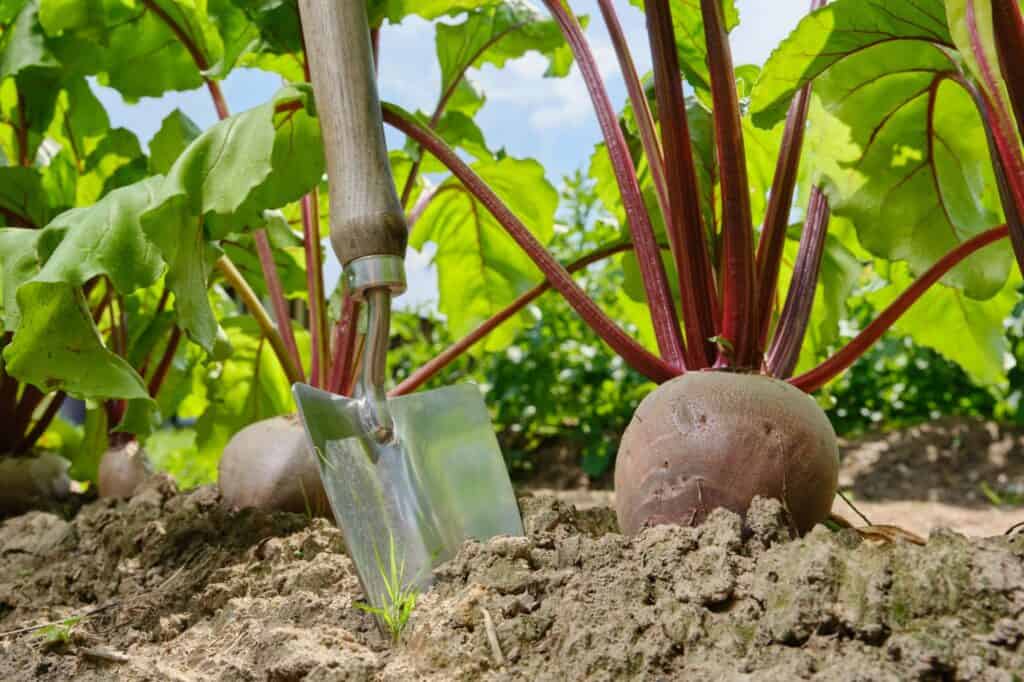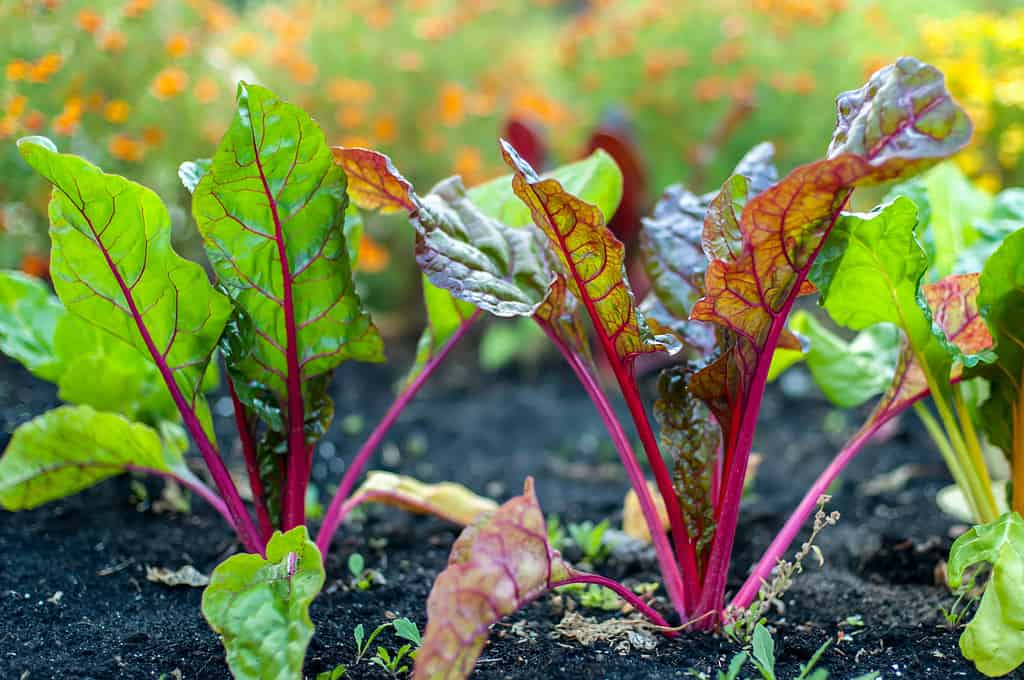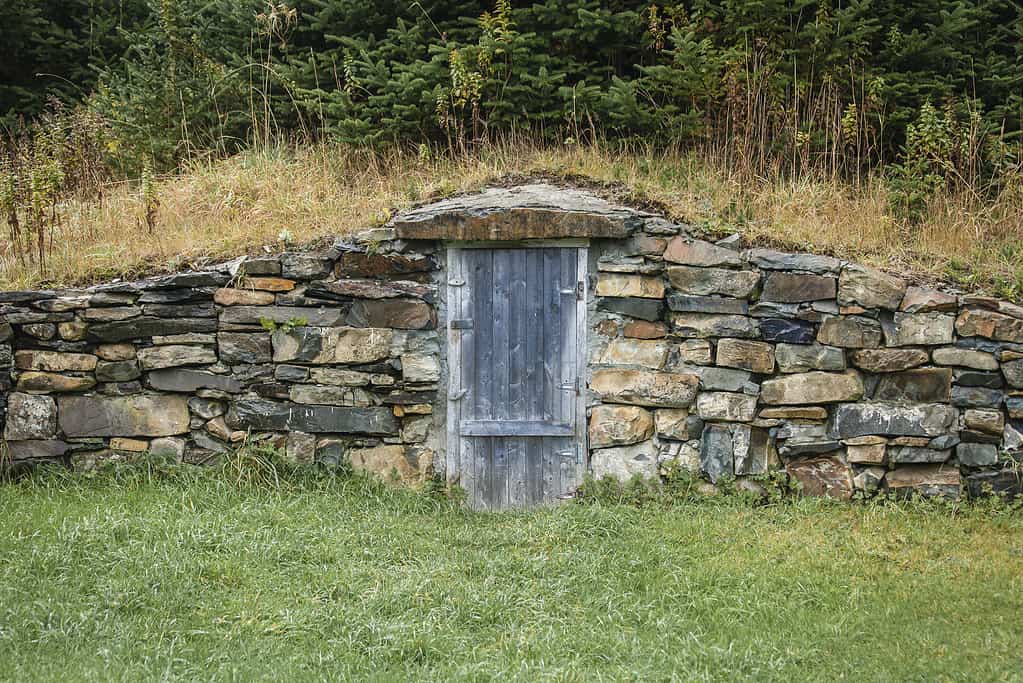The anticipation of a good harvest can be almost unbearable. After all, you’ve chosen the perfect planting site and spent weeks and weeks carefully nurturing your plants from seeds to maturity. But while many vegetables grow above ground and tell you when they’re ready, beets, being roots, remain hidden most of the time. So how do you know when your beets are ready for harvest?
In this article, we’ll learn about a few of the visual cues that you can use to decide when to harvest your beets. We’ll also talk about a few simple ways to keep your beets fresh until you’re ready to use them!
When to Harvest Beets
Harvesting your beets doesn’t have to be a guessing game! Even though their roots are beneath the soil, there are a few clear signs that your beets are ready to pull. And, as long as the vegetables meet your culinary needs, there’s no universally “correct” time to pull them. Below are a few tips that you can use to assess your beets before you harvest them.
1. Look For Their Shoulders

If you can see your beets’ shoulders, they’re probably ready for harvest!
©Nadezhda_Nesterova/iStock via Getty Images
You’ve probably heard of a head of lettuce, but have you ever seen the shoulders of a beet? As beetroots swell to maturity, they end up pushing away the soil around them. Most of the time, this results in the top of the beet, just below the crown, poking out from the soil surface. This bit, the rounded top of the beet, is often referred to as its shoulders.
If you see your beet’s shoulders, it likely means the plant is ready for harvest. Of course, since the root itself is visible at this point, you can visually assess its size and shape. If it’s a little on the small side, you may let it continue growing. Just don’t let it go for too long — beetroots tend to become woody with age. While older beets are still edible when cooked properly. Younger ones tend to be sweeter, though, so if you’re worried your beets are getting too old, go ahead and pull them out. You can always store them for later if you’re not quite ready to use them.
2. Check for Size

Beets are usually ready for harvest when they’re between the size of a golf ball and a tennis ball.
©Vlad Antonov/Shutterstock.com
Technically, you can harvest beets at any time, even if their shoulders aren’t showing, as they’re edible throughout their entire lifespan. If you’re not quite at the end of the season but you want to enjoy some of your beets, you can pull out the ones that are big enough to use. But how can you tell how big the root is?
To check the size of a beet without plucking it, simply push away enough soil to expose the top third of the beet. This will expose the shoulders and give you a good sense of how big the root has grown. If it meets your needs, go ahead and take it to the kitchen. Most people tend to harvest their beets when they are between a golf ball and a tennis ball in size. They’re the sweetest at this stage.
3. Compare the Greens

Comparing the greens of your plants can help you decide when your beets are ready for harvest.
©taratata/iStock via Getty Images
If you’ve partially excavated a couple of your beets to check their size, take note of their greens. Though there is room for genetic variation between plants, it’s usually fairly safe to assume that plants in the same bed with similarly sized greens will also have similarly sized roots. If the couple you’ve already checked on are ready for harvest, there’s a good chance others are too.
Of course, there’s more use for a beet plant than just its root. Beet greens are delicious, raw, or cooked, and are ready for harvest once the plant is a few weeks old. Just don’t take too many of the leaves at once, or you risk harming your plant. Many people grow beets specifically for their greens — harvesting the root at the end of the season is just icing on the cake! If you’re a particularly big fan of beet greens and live in a mild-wintered area, you can even leave them in the ground and enjoy a second season of greens from the same plant before it goes to seed.
Tips for Storing Your Beets
So you’ve picked a bunch of perfect beets from your garden and used what you needed, but you have some left over. Or maybe they were all ready at about the same time and you needed to pull them up before they became woody. In these cases, you need to know more than just when to harvest beets — you also need to know how to store them.
Like other root vegetables, beets can last a long time in storage, especially when frozen or pressure canned. Below, we’ll talk about a few methods you can use to keep them from going bad until you’re ready to use them.
1. Refrigerating

Beets can be kept for up to 10 days in the refrigerator as long as they are stored well.
©The Toidi/Shutterstock.com
Beets stay fresh for a long time when simply refrigerated. With attention to preparation, they can last about 10 days, give or take a day or two. To get the most life out of your beets in the refrigerator, keep them in a humid compartment or container like a plastic bag. Trim the greens to within 2 inches of the top of the root. Removing the greens saves space and reduces the amount of surface area for rotting and evaporation. Without the leaves losing water in the fridge, the roots will remain plumper for longer. Be sure to leave the beet’s taproot, or tail, intact and keep them at or below 41°F
2. Freezing
Freezing drastically increases the length of time you can store your beets. To freeze them properly, first, wash away dirt and debris. You’ll want to cook them before freezing, so sort them according to their size to ensure an even cook-through. Once sorted, trim the stem to within a half inch of the root to prevent loss of color during cooking. Since we’re cooking the beets, you can also trim the taproot to the same length.
Now that your beets are prepped, it’s time to cook them. Small beets should boil for about a half hour, or until tender. Larger roots may need to boil for up to 50 minutes. Once your beets are tender, pour off the boiling water and immediately place them into a cold water bath. Peel them if you want, cut them into slices or cubes, and pack them into a bag or rigid container. Mark your container with the date and place it in the freezer. Now frozen, your beets will last for up to 10 months!
3. Basement or Root Cellar Storage

Root cellaring is an effective and time-tested method of storing fresh root veggies!
©cpjanes/iStock via Getty Images
If you don’t want to freeze your beets or don’t even have a freezer, don’t worry! With proper care and monitoring, you can keep your raw beets fresh for several months post-harvest without any refrigeration. If you have a root cellar, great! If not, you can get away with storing your beets this way in a cool (but not freezing) basement. Don’t wash them beforehand, though. Scrubbing your beets removes their natural, protective wax layer and greatly reduces their shelf life!
To start with, select the best-looking beets in your harvest. You won’t get much shelf life this way out of gashed, bruised, or otherwise damaged beetroots. Once you’ve chosen the best of your roots, you’ll need a sturdy container like a plastic tote or a 5-gallon bucket. Fill the first inch or so of the container with lightly damp wood chips, sawdust, or sand, and spread out your beets on top. Ensure that none of the beets are touching each other, and then fill in the space with another layer of storage medium. Continue layering beets and filler until you’ve stored all your beets.
If you have a bumper crop, it’s best to use multiple containers so that you can sort through your beets throughout the winter. Thoroughly inspect your beets before use and promptly remove and discard any moldy ones so that they don’t contaminate the rest of your crop.
Your raw beets can last 6 to 8 months this way. After all, they are biennials. In mild winters, the roots survive underground to produce new foliage the following spring. Other root vegetables store well this way, too! Try it with your carrots, potatoes, and turnips, too. Don’t forget to leave the dirt on!
Thank you for reading! Have some feedback for us? Contact the AZ Animals editorial team.








